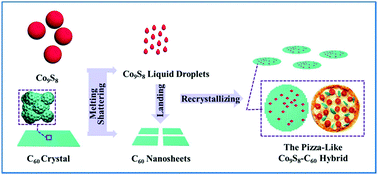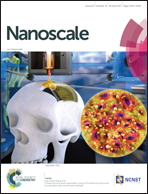Chemical grafting of Co9S8 onto C60 for hydrogen spillover and storage†
Abstract
Metal modified C60 is considered to be a potential hydrogen storage medium due to its high theoretical capacity. Research interest is growing in various hybrid inorganic compounds-C60. While the design and synthesis of a novel hybrid inorganic compound-C60 is difficult to attain, it has been theorized that the atomic hydrogen could transfer from the inorganic compound to the adjacent C60 surfaces via spillover and surface diffusion. Here, as a proof of concept experiment, we graft Co9S8 onto C60via a facile high energy ball milling process. The Raman, XPS, XRD, TEM, HTEM and EELS measurements have been conducted to evaluate the composition and structure of the pizza-like hybrid material. In addition, the electrochemical measurements and calculated results demonstrate that the chemical “bridges” (C–S bonds) between these two materials enhance the binding strength and, hence, facilitate the hydriding reaction of C60 during the hydrogen storage process. As a result, an increased hydrogen storage capacity of 4.03 wt% is achieved, along with a favorable cycling stability of ∼80% after 50 cycles. Excluding the direct hydrogen storage contribution from Co9S8 in the hybrid paper, the hydrogen storage ability of C60 was enhanced by 5.9× through the hydriding reaction caused by the Co9S8 modifier. Based on these experimental measurements and theoretical calculations, the unique chemical structure reported here could potentially inspire other C60-based advanced hybrids.



 Please wait while we load your content...
Please wait while we load your content...